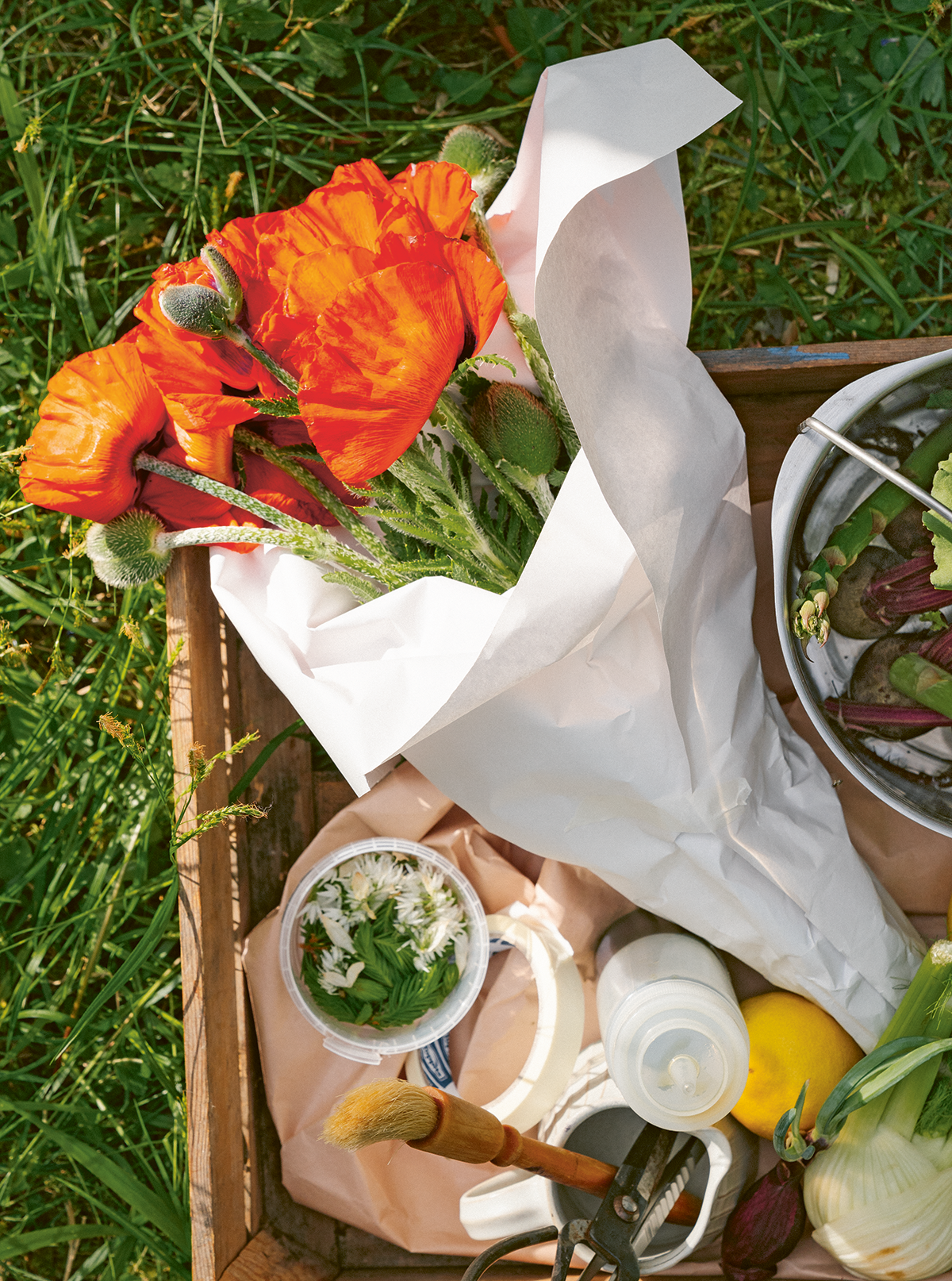"We like to work with complementary colours or matching tones. If I'm free to choose ingredients, I like to combine finer ones with the imperfect."
To visually capture food is not only about creating an appealing photo. The image should also evoke memories and feelings – making us want to eat or recreate those appetizing dishes. We invited food stylist Malin Fränberg and photographer Philip Nordin from Matbyrån Sthlm to create that perfect image, using what nature has to offer.
The biggest challenge in food images
Malin Fränberg has always been passionate about food, nature and cultivation, and she began her career as a chef, before she changed profession to food styling and photography seven years ago. We asked her what she perceive as the biggest challenge in creating food images for print.
"That would be to bring out the textures and the shine – the things that make the food come to life. Today we are spoiled with screens lighting up our images, so we need to reinforce what makes the food appetizing when it is intended for print. With the right choice of paper, you can also enhance the qualities of the image", Fränberg says.
Image composition can create interest
Philip Nordin has worked as a photographer since 2024. His main interest lies in light setting, composition and technology. When they were set the task to create attractive food images, we asked them both to share their thoughts on composition.
"I usually use the angle that is most favourable to the dish", says Nordin. "But rules are there to be broken, so sometimes it can be smart to think the opposite."

"Also dare to break the balance to create an interesting picture", Fränberg adds. "Crop objects, leave some dishes half plated or half eaten, to leave something to the viewer's imagination", she suggests. "But the photo needs enough information so that you can imagine what the finished dish will look like."
The setting will tell a story
The choice of ingredients and props for the image will be key to the final result.
"We like to work with contrasting colours or tone on tone", Fränberg explains. "If I’m free to choose ingredients, I like to combine finer ones with the imperfect. Beautiful ingredients, such as artichokes, can actually become quite uninteresting in the long run, because no one relates to something perfect.”
She likes to mix old and new props, and she has a weak spot for handmade ceramics as they tell a story. She usually tries to build a setting that reminds the viewer of where the food is served, in what kind of restaurant, home, or country.
The perfect image makes you feel good
All this aligns with the philosophy of Matbyrån Sthlm and their view of what the perfect food image should achieve.
"The perfect picture creates harmony, curiosity and joy. It should make you curious but also leave something to the imagination. And, it should put you in a good mood", Philip Nordin concludes.

This is an excerpt of the article The Perfect Plate, written by Anna-Lena Ahlberg, printed in PAPER #8. Follow some of the tips and tricks shared from the article, shared here below.

